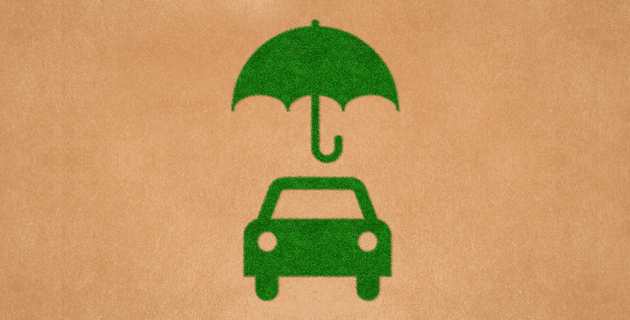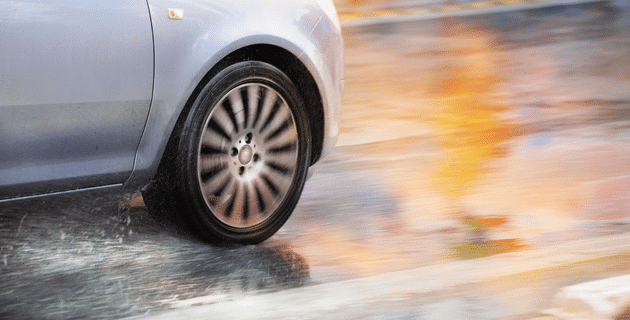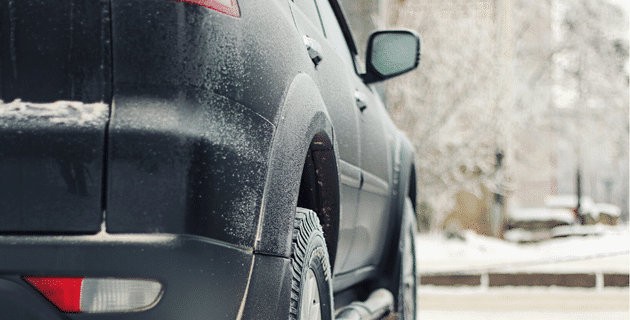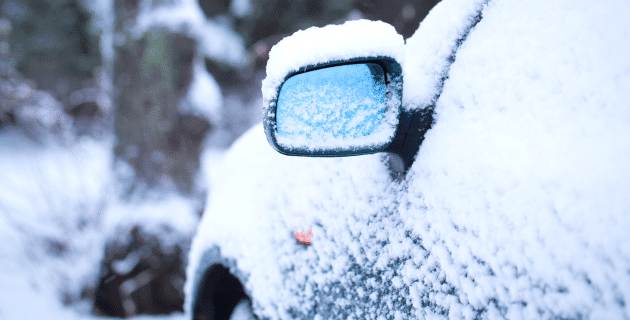
by California Casualty | Auto Insurance Info |
You don’t have to wait for your auto policy to expire to change insurance companies. However, you do need to make sure you’re fully covered without any gaps in insurance. We’ve compiled some guidelines to help you decide if a change is right for you.
When should you think about changing policies?
While you don’t need a reason to change your auto insurance, there are some times when it makes sense for you to revisit your policy—even if you don’t change insurance companies. You may end up modifying your current policy to meet your evolving needs. For example:
• If you’ve had a major life change, such as getting married or divorced, you may need more or less insurance.
• If you’ve moved to a new zip code or state, the new location could affect your premium.
• If you’ve become a homeowner, you can bundle your auto and home and save money.
• If you’ve gone from working out of the home to remote work, your annual mileage may be less.
• If you’ve bought a new car, you will want to check insurance policy options.
• If your teenager is about to get his or her license, that will add to your policy.
• If your credit score has improved, you may qualify for a lower rate.
• If you’re unhappy with your current insurer, you can consider a change.
• If you’re approaching your renewal date, you can terminate a contract without cancellation fees.
Follow these steps to make the change.
Step 1: Consider your coverage options.
Figure out how much coverage you need. If you depend upon your care, you want to make sure that you have enough to replace it if necessary. Also, check your state laws. Some states will require you to have certain car insurance. If you lease or finance a car, your lender or lessor will require you to purchase collision and comprehensive insurance.
Step 2: Compare quotes from multiple insurers.
Get quotes from several insurers, and make sure you are comparing the same coverage, limits, and deductibles. Sometimes policies are cheaper because they don’t have the same coverage. This is also a good time to contact your current insurer to find out about discounts, or other ways to lower your cost. California Casualty offers discounts to nurses, educators, and first responders.
Step 3: Check for penalties and perks.
If you’re in the middle of your policy contract, there may be a penalty for canceling. Make sure you figure that into the decision to switch. You also will want to look for the perks, or little extras, that are offered. Some insurers offer inexpensive roadside assistance or accident forgiveness for qualified customers. Some have smartphone apps or are available 24/7 online.
Step 4: Do your research.
You want to know how your new insurer handles claims, and whether they have a good customer service rating. It may not be worth a lower price if it’s going to be a hassle dealing with the new company. Check out your insurer with the Better Business Bureau, JD Power, or the National Association of Insurance Commissioners.
Step 5: Make sure there’s no gap in coverage.
Car insurance lapses can be expensive, especially if you have an accident on the day in between. If you cancel one policy, make sure the other one is already in place. Your new insurance company can provide proof of insurance to your old company. However, they cannot cancel your policy. You need to do so. You’ll receive a refund for any unused portion. There may be a cancellation fee.
Pro Tip: Also remember to cancel automatic payments to your old insurer with your bank or credit card.
Step 6: Notify your insurer and lender.
Make sure to officially cancel your policy with your old insurer. Otherwise, your insurer will think you simply stopped paying your bill, and you could be liable for charges. Some insurers require 24 hours before canceling, so make sure you are aware of the terms. Also let your lender or lessor know about your new insurance if you are leasing or financing your car.
Step 7: Replace your insurance ID.
Once you make the change, ask for a digital copy of your insurance card. You can also order a printed card. Remember to place your new insurance card in your car’s glovebox.
Finally, if you have an open claim, wait to make a change.
You may not be able to change insurers if you have an open claim with your current insurance company. The claim has to be paid and closed. Also, the rate quoted from your new insurance company may not take into account that most recent claim. If that’s the case, you could have a big increase when you renew with the new company, or even be responsible for a retroactive fee.
Get started with a free quote today at mycalcas.com/quote.
This article is furnished by California Casualty, providing auto and home insurance to educators, law enforcement officers, firefighters, and nurses. Get a quote at 1.866.704.8614 or www.calcas.com.

by California Casualty | Auto Insurance Info, Safety |
There are few things scarier than losing control of your car, but when it’s wet outside it can happen in an instant, no matter how safely you drive. This phenomenon is known as hydroplaning and it’s common during spring storms.
Here are some ways to reduce your chance of hydroplaning when you’re behind the wheel, and how to keep your car under control if you do.
What is hydroplaning?
Hydroplaning happens when your tires encounter more water than they can scatter. As a result, your tires lift up off the road and start riding on a layer of water. You lose traction, braking, and steering as your car skids and slides all over. It’s easy to crash. The more water there is, the more chance you might hydroplane. However, hydroplaning also can occur when roads are just slightly wet. The first 10 minutes of a light rain can be dangerous as water mixes with the oil residue and creates a slippery road surface.
Knowing what causes hydroplaning can help you take steps to avoid it. Hydroplaning is caused by a combination of three things:
-
- Wet conditions
- Your speed
- The condition of your tires
How to lower your chances of hydroplaning
1. Reduce your speed.
Hydroplaning is more likely to happen when you’re traveling faster than 35 mph. Plan your travels in the rain so that you can move more slowly. Also avoid sudden increases in speed, such as when passing cars. Those increases can cause your car to hydroplane.
2. Choose high-quality tires.
Your tires are your car’s first defense against hydroplaning. The tread or grooves are designed to push water aside. Make sure you invest in high-quality tires. Replace them when the tire tread has worn down. Driving on bald tires is especially dangerous in wet conditions.
3. Keep your tires well-maintained.
Make sure to rotate and balance your tires to help the tread wear evenly. Rotate the tires every other time you do an oil change, about every 7-10,000 miles. Also, make sure to keep your tires properly inflated.
4. Avoid puddles and standing water.
Spring storms can create puddles and standing water. If you see them, try not to drive through them. Also, avoid driving in the outer lanes where water tends to accumulate. Follow the tire tracks of the vehicle in front of you. Their tires already did some of the work of displacing the water. Just don’t follow too closely in case you have to slow down or stop unexpectedly.
5. Avoid hard braking and sharp or quick turns.
Sudden quick movements can cause hydroplaning. If you have to turn, take it slowly. Avoid any type of sudden braking. Stay in your lane.
6. Don’t use cruise control in the rain.
You’ll have to react immediately if you start to hydroplane. You don’t want to take extra time to disengage cruise control. In the moment, every second counts.
If you hydroplane, here’s what to do.
-
- Take your foot off the gas. This will help to slow you down.
-
- Do not slam on the brakes. That may be your natural instinct, but slamming on the brakes can cause your car to skid further out of control. If you need to brake, use a light pumping motion.
-
- Gently steer in the direction your car is sliding. This will help your tires realign and allow you to gain control of the steering.
-
- When you feel the tires reconnect with the road surface, take control of the steering. You’re now good to proceed on your journey. You may want to pull over to a safe spot to regroup and calm down before going on.
Accidents can happen. Make sure that your vehicle is fully covered for added peace of mind.
Safe travels.
This article is furnished by California Casualty, providing auto and home insurance to educators, law enforcement officers, firefighters, and nurses. Get a quote at 1.866.704.8614 or www.calcas.com.

by California Casualty | Auto Insurance Info |
Each year, 1 in every 6 people in the U.S. get a speeding ticket at the average cost of about $150. But tickets aren’t the only price you pay for speeding. Your auto insurance rates could take a hit; how much depends upon important factors like your driving record, the state where you live, and how fast you were traveling.
Your driving record is important.
Speeding increases your chances of causing an accident which impacts your policy and your pocketbook in a negative way. If your previous driving record includes speeding, accidents, and other violations, you could be considered risky to insure. Your insurer would likely raise your rates in that case. You may even have trouble getting insured.
For most states where California Casualty offers insurance, the maximum minor convictions per driver is two over a 3-year period. Once you reach three, you no longer meet our new business acceptability guidelines.
In addition, in most states, points are used to keep track of moving violations. You get points added to your license for each offense, with more points given for serious ones like driving under the influence (DUI). Too many points can cause your license to be suspended. (In the states that don’t use points, they still keep track of violations.)
From an insurance standpoint, a minor ticket like speeding is surcharged for a 3-year period from the date of conviction. Major convictions can impact your rates and acceptability from 3 to 10 years, depending on the state.
Your insurance company is not typically notified by the Department of Motor Vehicles that you have points on your license because of a speeding violation. However, before quoting you a price, an insurer will order a new motor vehicle report to get updated information.
Speed and location make a difference.
There’s a difference if you’re going 5 miles over the speed limit or 25. The latter may be considered reckless driving, a more serious charge.
NerdWallet found that car insurance typically increases about 25% after a speeding ticket.
Insurance.com notes that if you are 11-15 miles over the speed limit, that can raise your rate by 20% on average. If you have two tickets going that speed, that can raise your rate by an average of 43%.
It also varies by state. A speeding ticket in Texas for 16 miles over the limit costs customers an average insurance increase of $600 over three years. Nationwide, the average speeding ticket raises rates $1,380 over three years.
These increases don’t always happen right away. They are usually calculated at the time that you renew your auto policy. Of course, speeding charges can impact you immediately if you start a new policy or make changes to your existing policy. Be ready.
Here’s how to lower your premium after a speeding ticket.
Paying the speeding fine and moving on may seem like that best thing to do. However, you can take extra steps that could help save you money on your future insurance premium.
• Take a defensive driving course. Ask for the court’s permission to take a driver safety course to help get your ticket dismissed or the points reduced. You may need to pay some upfront fees to do so, such as court costs and for the driving course. You’ll also have to spend 6 hours in training for a refresher on safety like how to share the road with others. However, it may be worth it to save money on your insurance premiums in the future. Be aware that some states limit the number of times you can take a driving class within a certain period of time.
• Ask for a deferred deposition or adjudication. This may be an option in your state if you were going less than 25 mph above the posted speed limit. Ask the court to delay a decision on your case for a specified timeframe. You’ll be placed on probation during this time period. If you follow the rules, your case may be dismissed. You most likely will have to pay additional court fees for this option.
• Ask for mitigation. While you can plead guilty to speeding, you can explain the circumstances to the court and ask if they can reduce the points on your license. They may even be able to change the charge to a non-moving violation. If reduced to a VEQ (Vehicle Equipment Violation), the ticket is ignored for surcharging and for acceptability purposes for all states. You likely will still have to pay a fine, so come prepared.
• Contest the ticket. If you feel the ticket was in error, it is in your best interests to contest it. Go to court, and plead not guilty. You may wish to bring a lawyer to present your strongest case.
• Keep track and notify your insurer. One benefit of California Casualty is that if you call us the day after a minor conviction turns 3 years old, we will remove the surcharge. At that time, we’ll order an updated Motor Vehicle Report so we have all of the current information.
This article is furnished by California Casualty, providing auto and home insurance to educators, law enforcement officers, firefighters, and nurses. Get a quote at 1.866.704.8614 or www.calcas.com.

by California Casualty | Auto Insurance Info |
Brrrr…it’s cold out there. But those freezing temperatures don’t just affect us. They can also impact our cars, some even to the point where they may not start or function.
Here’s a quick checklist to help you know what to look for, and what to do, to ease the effects of frigid temps on your vehicle.
Check your tires.
A lot is riding on your tires. You want them to grip the road in all conditions, whether dry or wet, snowy or icy. However, as temperatures dip, so does the pressure in your car’s tires. That underinflation can result in serious safety issues. Underinflated tires can cause your car to lose traction, and slip and slide in wet conditions. The tires’ treads can wear unevenly. You could even be at risk for a tire blowout. Having the right tire pressure helps with a safe ride and also improves gas mileage.
What to do: Check your tire’s air pressure at least once a week and fill your tire as needed to manufacturer’s specifications. Consider getting winter tires that perform better on snowy surfaces if you live in a place with frigid temperatures.
Check the battery.
Batteries help start our cars and power electrical features. Most batteries use a chemical reaction with lead acid to generate the electric current. In freezing temperatures, this reaction is slower and your battery’s power is reduced. That means it may not have enough “juice” to start at all. This is especially true for older or weaker batteries.
What to do: If your car doesn’t start immediately, turn off the lights, heater, radio, phone chargers, and anything that is powered by your battery. Try starting your car again to see if that helps. If not, use jumper cables to get your vehicle going. In general, keep battery connections clean and free of corrosion, which will help it work to its best potential. Also, consider a battery warmer. Finally, replace your battery if it is more than 3 years old. If you’re unsure of your battery’s life, have it tested. Many auto shops offer that service for free.
Are you driving an Electric Vehicle (EV)? Cold can affect your battery too. There’s less energy for acceleration and your range may decrease. Preheat your EV before going out. Be prepared for longer charging times in winter months.
Check your fluids.
Freezing temperatures can affect your car’s oil, coolant, and transmission fluids. When it’s very cold, these fluids become so thick that the engine cannot circulate them, or has to work harder to do so. Without these essential fluids, your vehicle cannot operate properly or sometimes at all. With a lack of oil, your engine isn’t lubricated. With a lack of transmission fluid, your car struggles to switch gears. With a lack of coolant, your engine can overheat. The frozen coolant can also crack and damage your radiator hoses.
What to do: Let your car warm up fully before driving. Switch to low-viscosity oils, or synthetic oils, which flow more easily when it’s cold. Make sure there is a proper ratio of antifreeze (coolant) to distilled water. An improper mix can have a higher freezing point. You can check your coolant’s freeze point with a refractometer. Also, winter is a good time to have your transmission fluid checked and replaced if needed.
Fill your gas tank.
Gas will not freeze unless it’s 100 degrees below zero. But water in your gas tank or lines can become ice that clogs the system. The ice can make it hard to start your car or give you a sputtery ride. It also can leave you stranded with your car unable to go anywhere.
What to do: Keep your gas tank at least half full to avoid this problem. If you do get stranded with a frozen fuel line, you can get your car towed to a warm location. You also can try adding gas and/or fuel line antifreeze to the tank.
Let screens warm up.
You may notice your liquid crystal display (LCD) screens being slow in the cold. That’s because the molecules in LCDs slow down when the temperature drops.
What to do: Wait for the car to warm up, and the screens should resume their normal speed. You can install an engine block heater to help things along or park in a warmer place like a garage to minimize the cold’s effects.
Clear your windshields.
On a cold day, your breath could condense and freeze on the inside of your windshield. Keep your windshields as clear as possible with the defrost function. Windshield washer fluid also may not work as well in the cold. It may be unable to spray because it’s frozen.
What to do: You can buy windshield washer fluid that is made for cold temperatures. Even so, it could freeze, so make sure your car is warmed up before using it. Also, check that your car’s defrost system is in good working order.
Check the rubber on wipers and doors.
Freezing temps can cause the rubber on your windshield wiper blades to become brittle. They could easily tear or crack, which creates blurry windshields—a recipe for car accidents. In addition, doors can freeze shut in cold temperatures, which is an added annoyance.
What to do: Consider buying winter wiper blades that are made to hold up to cold temperatures. Make sure you replace your wiper blades when they are worn. For frozen car doors, try using silicone spray on the rubber door gaskets to keep them from freezing shut.
Check your belts and hoses.
Older serpentine belts may be brittle and can break when they get cold. They also may be so cold that they don’t bend as they should. Cold weather can also take its toll on your coolant hoses. A bad belt can continue to function but there often are signs that it is failing and needs to be replaced. Listen to noises your car may make to indicate that and other problems.
What to do: Have your mechanic check the drive belt system and coolant hoses at every oil change. Replace parts when they show signs of wear and tear.
Remember, your car is one of your greatest investments. Keep it well-maintained all winter long and don’t forget to protect it with the right insurance.
This article is furnished by California Casualty, providing auto and home insurance to educators, law enforcement officers, firefighters, and nurses. Get a quote at 1.866.704.8614 or www.calcas.com.

by California Casualty | Auto Insurance Info, Finances, Homeowners Insurance Info |
From groceries to gas, it seems like we’re paying more for everything these days. Now insurance rates are increasing as well. Why is this happening, and more importantly, what can we do about it? Here’s what you need to know.
What we’re seeing…
Car insurance rates rose 9% over the course of 2022, a trend that is expected to continue with another 7% rate growth in 2023 according to Insurify. Home insurance rates increased by an average of 12.1% in 2021, and another 3% in 2022 said Bankrate.com. Experts predict rate increases each year for the next few years due to the perfect storm of inflation, supply chain issues, weather changes, and other factors.
We’re experiencing historic inflation.
Inflation is at its highest level in decades. Inflation has had a significant impact on the cost of auto parts and labor, as well as medical expenses for bodily injuries.
From March 2021 to March 2022, here’s how prices have increased:
-
-
- Medical services – increased 2.9%
- Auto repair costs – increased 4.9%
- Car rental costs – increased 13.8%
- Used vehicles – increased 35.3%
Similarly, the costs associated with a home claim also have been affected by inflation. This includes additional temporary living expenses, replacement of personal property and home furnishings, cost of construction labor, and costs of construction supplies.
From March 2021 to March 2022, here’s how prices have increased:
-
-
- Rent – increased 5.1%
- Home furnishings – increased 10.1%
- Construction labor and trade services – increased 21.3%
- Construction materials and goods – increased 22.2%
Supply Chain Issues
There are supply chain issues created by the pandemic and by a labor shortage. When we can’t get parts or supplies to repair a vehicle or a home, the process becomes lengthier and results in repairs simply costing more.
Other Factors
The severity and frequency of vehicle accidents are on the rise. Traffic fatalities reached a 16-year high in 2021 according to the National Highway Traffic Safety Administration, due to an increased trend in post-pandemic risky driving behaviors – speeding, driving distracted, not wearing seatbelts, and driving under the influence. This rise in accidents directly affects claims, which contributes to rising auto insurance costs.
Similar conditions come into play for home insurance costs. The number of extreme climate events and weather disasters is also increasing. In 2022, there were 18 disasters with losses of more than $1 billion each, according to the National Centers for Environmental Information.
An inside look at how this affects your insurance rate
As material and labor costs rise, the cost to repair and replace damaged homes and vehicles increases. Factor in the ongoing supply chain issues and costs increase even more. The amount you pay for insurance is likely to go up when the cost to settle claims rises.
“But I’ve never been in an accident, so why would my rate go up?”
Even if you have a spotless driving record or never filed a claim, it’s likely that your insurance costs could be impacted due to economic factors that are out of your control – regardless of the company that provides your coverage. Insurers across the country have been raising rates, some multiple times in the past 12 months. However, it’s not all doom and gloom. There are ways you may be able to reduce your costs.
What You Can Do to Lower Your Premiums
Your insurance provider can recommend adjustments that still give you the quality coverage you need but with a lower premium. Start with a thorough policy review and make sure to look at these areas.
• Review deductible options. Generally, the higher your deductible, the lower the cost of your insurance premium. Since the deductible is the amount your insurance provider will subtract from an insurance payout, you’ll have to select a deductible that you’re comfortable paying out-of-pocket after a loss. Note that there can be diminishing returns if you set your deductible much higher than average, so as a consumer, you need to balance the premium savings against the amount you’d be required to pay after a loss.
• Take advantage of discounts. You may qualify for insurance discounts for being part of a professional association, such as groups for teachers, nurses, or first responders. There are also discounts for being retired, good student discounts, setting up automated payments, and for paying in full upfront. You may also receive a discount for quoting online.
• Buy home and auto insurance from the same company. When you bundle your home and auto insurance, you can often qualify for reduced rates, saving hundreds of dollars.
• Remove Gap coverage if no longer needed. When you buy or lease a new vehicle, it starts depreciating once you drive it off the lot. Gap insurance ensures that you will get the full replacement value of your car if it is totaled or stolen. As a car begins to age, this gap goes down and the need for coverage is less.
• Make your home disaster resistant. Talk to your insurance agent about how you can disaster-proof your home. You may be able to save on your premiums by adding storm shutters, reinforcing your roof or buying stronger roof materials, or even clearing brush from around your home. Older homes can be retrofitted to make them better able to withstand earthquakes or other natural disasters. In addition, consider modernizing your heating, plumbing, and electrical systems to reduce the risk of fire and water damage.
• Choose electronic documents rather than mail. This is an easy change that often comes with a discount and can add up in the long run.
• Skip a payment. Some insurance companies allow you to skip payments around the holidays. At California Casualty, you have the option to skip payments during the summer or holiday months when budgets tend to be extra tight. Ask your agent for details.
California Casualty has been slower with rate increases than the bigger carriers. We will always strive to keep our prices as affordable as possible for our members. When we do make rate changes, it is to be able to maintain the financial fortitude to keep our promises to every policyholder during their time of need.
This article is furnished by California Casualty, providing auto and home insurance to educators, law enforcement officers, firefighters, and nurses.

by California Casualty | Auto Insurance Info |
Brrrr…it’s cold out there. But those freezing temperatures don’t just affect us. They can also impact our cars, some even to the point where they may not start or function.
Here’s a quick checklist to help you know what to look for, and what to do, to ease the effects of frigid temps on your vehicle.
Check your tires.
A lot is riding on your tires. You want them to grip the road in all conditions, whether dry or wet, snowy or icy. However, as temperatures dip, so does the pressure in your car’s tires. That underinflation can result in serious safety issues. Underinflated tires can cause your car to lose traction, and slip and slide in wet conditions. The tires’ treads can wear unevenly. You could even be at risk for a tire blowout. Having the right tire pressure helps with a safe ride and also improves gas mileage.
What to do: Check your tire’s air pressure at least once a week and fill your tire as needed to manufacturer’s specifications. Consider getting winter tires that perform better on snowy surfaces if you live in a place with frigid temperatures.
Check the battery.
Batteries help start our cars and power electrical features. Most batteries use a chemical reaction with lead acid to generate the electric current. In freezing temperatures, this reaction is slower and your battery’s power is reduced. That means it may not have enough “juice” to start at all. This is especially true for older or weaker batteries.
What to do: If your car doesn’t start immediately, turn off the lights, heater, radio, phone chargers, and anything that is powered by your battery. Try starting your car again to see if that helps. If not, use jumper cables to get your vehicle going. In general, keep battery connections clean and free of corrosion, which will help it work to its best potential. Also, consider a battery warmer. Finally, replace your battery if it is more than 3 years old. If you’re unsure of your battery’s life, have it tested. Many auto shops offer that service for free.
Are you driving an Electric Vehicle (EV)? Cold can affect your battery too. There’s less energy for acceleration and your range may decrease. Preheat your EV before going out. Be prepared for longer charging times in winter months.
Check your fluids.
Freezing temperatures can affect your car’s oil, coolant, and transmission fluids. When it’s very cold, these fluids become so thick that the engine cannot circulate them, or has to work harder to do so. Without these essential fluids, your vehicle cannot operate properly or sometimes at all. With a lack of oil, your engine isn’t lubricated. With a lack of transmission fluid, your car struggles to switch gears. With a lack of coolant, your engine can overheat. The frozen coolant can also crack and damage your radiator hoses.
What to do: Let your car warm up fully before driving. Switch to low-viscosity oils, or synthetic oils, which flow more easily when it’s cold. Make sure there is a proper ratio of antifreeze (coolant) to distilled water. An improper mix can have a higher freezing point. You can check your coolant’s freeze point with a refractometer. Also, winter is a good time to have your transmission fluid checked and replaced if needed.
Fill your gas tank.
Gas will not freeze unless it’s 100 degrees below zero. But water in your gas tank or lines can become ice that clogs the system. The ice can make it hard to start your car or give you a sputtery ride. It also can leave you stranded with your car unable to go anywhere.
What to do: Keep your gas tank at least half full to avoid this problem. If you do get stranded with a frozen fuel line, you can get your car towed to a warm location. You also can try adding gas and/or fuel line antifreeze to the tank.
Let screens warm up.
You may notice your liquid crystal display (LCD) screens being slow in the cold. That’s because the molecules in LCDs slow down when the temperature drops.
What to do: Wait for the car to warm up, and the screens should resume their normal speed. You can install an engine block heater to help things along or park in a warmer place like a garage to minimize the cold’s effects.
Clear your windshields.
On a cold day, your breath could condense and freeze on the inside of your windshield. Keep your windshields as clear as possible with the defrost function. Windshield washer fluid also may not work as well in the cold. It may be unable to spray because it’s frozen.
What to do: You can buy windshield washer fluid that is made for cold temperatures. Even so, it could freeze, so make sure your car is warmed up before using it. Also check that your car’s defrost system is in good working order.
Check the rubber on wipers and doors.
Freezing temps can cause the rubber on your windshield wiper blades to become brittle. They could easily tear or crack, which creates blurry windshields—a recipe for car accidents. In addition, doors can freeze shut in cold temperatures, which is an added annoyance.
What to do: Consider buying winter wiper blades which are made to hold up to cold temperatures. Make sure you replace your wiper blades when they are worn. For frozen car doors, try using silicone spray on the rubber door gaskets to keep them from freezing shut.
Check your belts and hoses.
Older serpentine belts may be brittle and can break when they get cold. They also may be so cold that they don’t bend as they should. Cold weather can also take its toll on your coolant hoses. A bad belt can continue to function but there often are signs that it is failing and needs to be replaced. Listen to noises your car may make to indicate that and other problems.
What to do: Have your mechanic check the drive belt system and coolant hoses at every oil change. Replace parts when they show signs of wear and tear.
Your car is one of your greatest investments. Keep it well-maintained and protect it with the right insurance.
This article is furnished by California Casualty, providing auto and home insurance to educators, law enforcement officers, firefighters, and nurses. Get a quote at 1.866.704.8614 or www.calcas.com.






